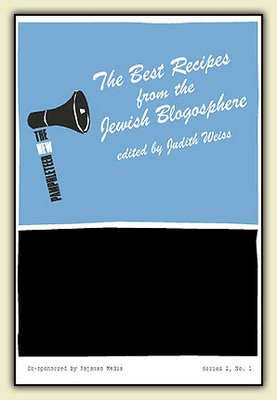One of the Joys of Travel to Exotic Destinations is the chance to sample the local cuisine - to try foods that you cannot get at home.
In this day of inexpensive travel and cheap communications, foreign foods are far less foreign than they used to be. Even in Atlanta, which used to be a moderately provincial Southron city in which good Mexican food was impossible to find, the world’s cornucopia overflows. The tastes of many nations are easily available to the Intrepid Eater. Chinese, Mexican, Persian, Ethiopian, Brazilian, all are easy to find...and are reasonably authentic.
When I travel, I enjoy seeking out the local goodies. I have enjoyed Shanghai Hairy Crab and Fish Head Curry in Singapore, duck’s tongues in Hong Kong, snake soup in China. These are treats that are a challenge to find back home.
Even here in Maritime Canada, there are Exotic Foods that somehow have never made it over the border to that Big Country to the South.
I’m not talking about things like seafood chowder and blueberry pie. You can find these in the States - especially in New England - and they will be reasonable approximations of the Real Maritime Thing. Not quite as good, perhaps, but workmanlike.
But Canada has its own Culinary Traditions, traditions with which us South-of-the-Border Americans are unacquainted.
Take, for example, dulse.
You may have had dulse without ever knowing it. Carrageenan, an ingredient that is used as a thickener and gelling agent in many processed foods, is produced from seaweed - kelp, Irish moss, or dulse.
Yes - dulse is seaweed.
Here in Maritime Canada, dulse is sold dried, in bags. You can crumble it up and add it to a soup or salad. You can serve it as a garnish. In powdered form, you can use it to thicken sauces.
Or, if you’re a true Maritimer, you can eat it like popcorn, right out of the bag. It has an indescribable briny, smoky flavor that is an unmistakable clue to its oceanic origin. Low in calories, it’s loaded with minerals and fiber. Think of it as Veggie Jerky, with an iodine pong that smacks of the open water. Yummers.
Dulse is good for you, but not all of the local goodies are quite as healthy.
There is, for those who crave a Heart Attack in a Bowl, poutine.
Poutine is the quintessential junk food of Quebec. You can get it most places in Canada, but if you crave it, you must go to La Belle Province. Think of it as Canadian nachos: what you might eat at a Blue Jays game in lieu of the ubiquitous Hot Dog. [In fact, that is where I first sampled it.]
Poutine is simply a bowl of French fries (preferably a Styrofoam bowl), covered with white cheese curds and then smothered in brown gravy. Sounds grotesque, no? But this description does not capture the meaty fragrance of the gravy, the squeak of the curds as you bite into them. Whether made with standard fries or waffle fries (as is the poutine sold at the Toronto SkyDome), it’s perversely delicious...especially when washed down with its traditional accompaniment, Root Beer.
You like that Heart Attacky kind of stuff? Then you must - simply must - try a Donair, Nova Scotia’s answer to souvlaki. It’s Canada’s spin on the well-known Turkish doner kebab.
Let’s start with the sauce. Donair sauce is a simple affair. Take 2/3 cup evaporated milk, 2/3 cup sugar, 1/4 cup white vinegar, and 1/2 tsp garlic powder. Simply stir the milk, sugar, and garlic powder until the sugar is completely dissolved. Then add the vinegar and keep mixing - the trick is not to overmix the sauce at this stage. Let it sit in the fridge for at least an hour and you’re ready to roll. If it separates (as it will after a few hours or days), just skim the thick goopy sauce off the top.
Alternatively, you can make Donair sauce with sweetened condensed milk: just use 2/3 cup in lieu of the milk and sugar in the preceding recipe, and stir the crap out of it after you add the vinegar.
What do you do with this lovely stuff once you’ve made it? You put it on a pita bread with Donair meat.
Take 3 pounds finely-ground hamburger. Add 3/4 cup bread crumbs, 2 tsp pepper, one or two tsp cayenne, 1 1/2 tsp oregano, 3 tsp paprika, 2 tsp onion powder, 1 tsp garlic powder, and 1/2 tsp salt. Knead the ingredients in a large bowl for twenty minutes, or until your hands fall off. Shape into two loaves, then place on a broiler pan and bake in a 300-degree oven for 2 - 2 1/2 hours. Cool and slice into slabs.
Now, throw a couple of slabs of meat in a pan and heat it through. Dip a piece of pita bread in water and throw it in a frying pan to soften it up. Slather the bread with Donair sauce, top with the meat-slabs, some chopped onions and tomatoes, and more sauce. Roll the whole mess up or serve open-face. Eat without utensils.
After a few of these, you’ll be an honorary Canadian. Or an organ Donair.
Monday, June 12, 2006
Subscribe to:
Post Comments (Atom)




















No comments:
Post a Comment